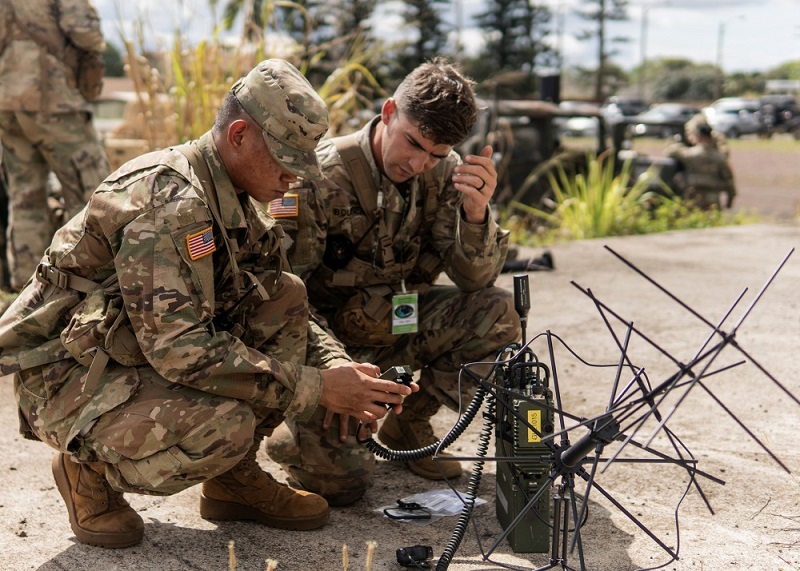The U.S. Navy’s next-generation narrowband satellite communications system completed a critical test and evaluation phase and was assessed as operationally effective, operational suitable and cyber survivable. The successful completion of this testing demonstrates the system’s full operational capability and its readiness for forces to transition it into unrestricted operations, the Navy announced October 16.
Known as the Mobile User Objective System (MUOS), it is a Navy-led effort that provides essential narrowband satellite communications for the Department of Defense (DoD) and other U.S. government organizations. The recent required completion of Multiservice Operational Test and Evaluation to evaluate measures of effectiveness, suitability and performance in an operationally representative environment means it is now ready for full operational use. Commander, Operational Test and Evaluation Force, the Navy’s operational test agency, led the multimonth effort that included participants from the Army and Marine Corps.
“Sailors and Marines can already use MUOS in situations like humanitarian response, disaster assistance and training,” said John Pope, who leads the Navy’s Program Executive Office Command, Control, Communications, Computers, Intelligence and Space Systems (PEO C4I and Space Systems). “Now, these same advanced communications capabilities will be available in the tactical warfare environment. The advantages MUOS provides will help the warfighter compete, deter and win on the battlefield.
The MUOS program falls into the program portfolio of the Navy Communications Satellite Program Office at PEO C4I and Space Systems.
Each of the five satellites in the MUOS constellation carries two payloads. The legacy communications payload was designed to maintain DoD legacy narrowband communications during the transition to the advanced MUOS Wideband Code Division Multiple Access (WCDMA) capability. The MUOS WCDMA payload interfaces with the MUOS ground system through the MUOS WCDMA waveform that is integrated into end-user radios, adapting commercial cellular technology. This capability allows warfighters to communicate beyond line of sight more securely and reliably than ever before, with 10 times the capacity and significantly improved quality of service compared to the legacy narrowband constellation.
While the legacy capability continues to support unrestricted operations, the WCDMA capability will dramatically increase effectiveness, information security and global reach for missions across the spectrum of operations.
The WCDMA payloads were approved by U.S. Strategic Command (USSTRATCOM) for Early Combatant Command Use in July 2016, paving the way for testing, training, exercises and concept of operations development across the services. In July 2018, USSTRATCOM expanded WCDMA use to include all noncombat operations.
MUOS provides global connectivity to terminals, platforms, tactical operators and operations centers to support global voice and data communications requirements. Operators today with MUOS WCDMA radios are able to transmit simultaneous voice, video and mission data on an Internet Protocol-based system that connects to military networks.
“This is the last critical milestone before turning MUOS over for full operations and I am very proud of the entire team that contributed to this outstanding achievement,” said Capt. Chris DeSena, program manager, Navy Communications Satellite Program Office. “The capability MUOS brings to the warfighter is revolutionary in terms of narrowband communications, and I look forward to seeing the potential of MUOS fully realized.”
Source: US Navy








